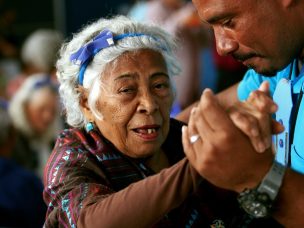Contributions
Onasemnogene Abeparvovec Found Safe Over Six-Year Period
Onasemnogene abeparvovec is a gene replacement therapy used to treat type 1 spinal muscular atrophy (SMA). This type of SMA is characterized by onset before 6 months of age. This study, published in JAMA Neurology, studied the use of onasemnogene abeparvovec over 6.2 years following therapeutic administration. The study had two principal objectives: determine the...
The Costs of Spinal Muscular Atrophy Treatment
Spinal muscular atrophy (SMA) is divided into five types based on the age of onset and highest motor milestone achieved. To ease the burden of the disease, patients require a complex combination of multidisciplinary care. As a result, care can often be costly. This study, published in PharmacoEconomics, provides a literature review of the costs of...
Risdiplam Found to Improve Type I SMA
Type 1 SMA is a progressive neuromuscular disease characterized by onset at 6 months of age or younger. Risdiplam is a medication used to treat spinal muscular atrophy (SMA). It works by modifying SMN2 pre-messenger RNA splicing while increasing levels of functional SMN protein in the blood. This study, published in the New England Journal of...
Impact of Delayed Treatment on Kids With SMA During COVID-19
With the COVID-19 pandemic causing nusinersen treatments to be postponed, a study published in Frontiers in Neurology sought to understand the impact of delayed infusions and other supporting interventions for patients with spinal muscular atrophy (SMA) during the initial lockdown period in Italy in 2020. Researchers from the pediatric palliative care Centre of Padua (Veneto) evaluated...
The Oncogenic Role of COPB2 in Human Tumors
Coatomer protein complex subunit beta 2, also known as COPB2, may act as an oncogene in certain types of cancer. Until now, no systematic pan-cancer analysis has been performed on COPB2. This study, published in BioMed Research International, used The Cancer Genome Atlas and the Gene Expression Omnibus datasets to analyze the oncogenic role of COPB2. ...
Tumor Mutational Burden and Immunotherapy Response
Tumor mutational burden (TMB) can function as a biomarker for response to immunotherapy. Understanding how to accurately test TMB and understanding the implications of variation in the results can inform treatment. This study, published in Clinical Research (Excluding Clinical Trials), analyzed the genomic profiles of patients with cancer to assess TMB prevalence and variability, and its...
New Pan-Tumor Test Shows Promise
The PD-L1 IHC 22C3 pharmDx is an FDA-approved companion diagnostic to pembrolizumab designed for use on Autostainer Link 48. This study, published in Pathology, compared a 22C3 antibody-based laboratory-developed test (LDT) on BenchMark XT with the FDA-approved PD-L1 IHC 22C3 pharmDx. Pan-tumor data for this study included samples from a total of 327 patients with esophageal...
Racial Differences in Tumor Mutation Burden Testing
Tumor mutational burden (TMB) refers to the total number of non-inherited mutations found in the DNA of cancer cells and can help determine the best course of treatment. This retrospective study, published in Future Oncology, focuses on the use of tumor mutational burden testing in pan-tumor populations. So far, there is limited real-world information regarding...
Leveraging Epigenomic Variation Across Cancer Cell Lines
It is well understood that epigenetic dysregulation can contribute to the formation of tumors and that gene expression variations impact how well tumors respond to treatment and how tumors can progress. However, despite advancements in profiling techniques, it is unclear how epigenetic alterations contribute to cancer cellular properties, such as heterogeneity, stemness, and chemoresistance. To better...








